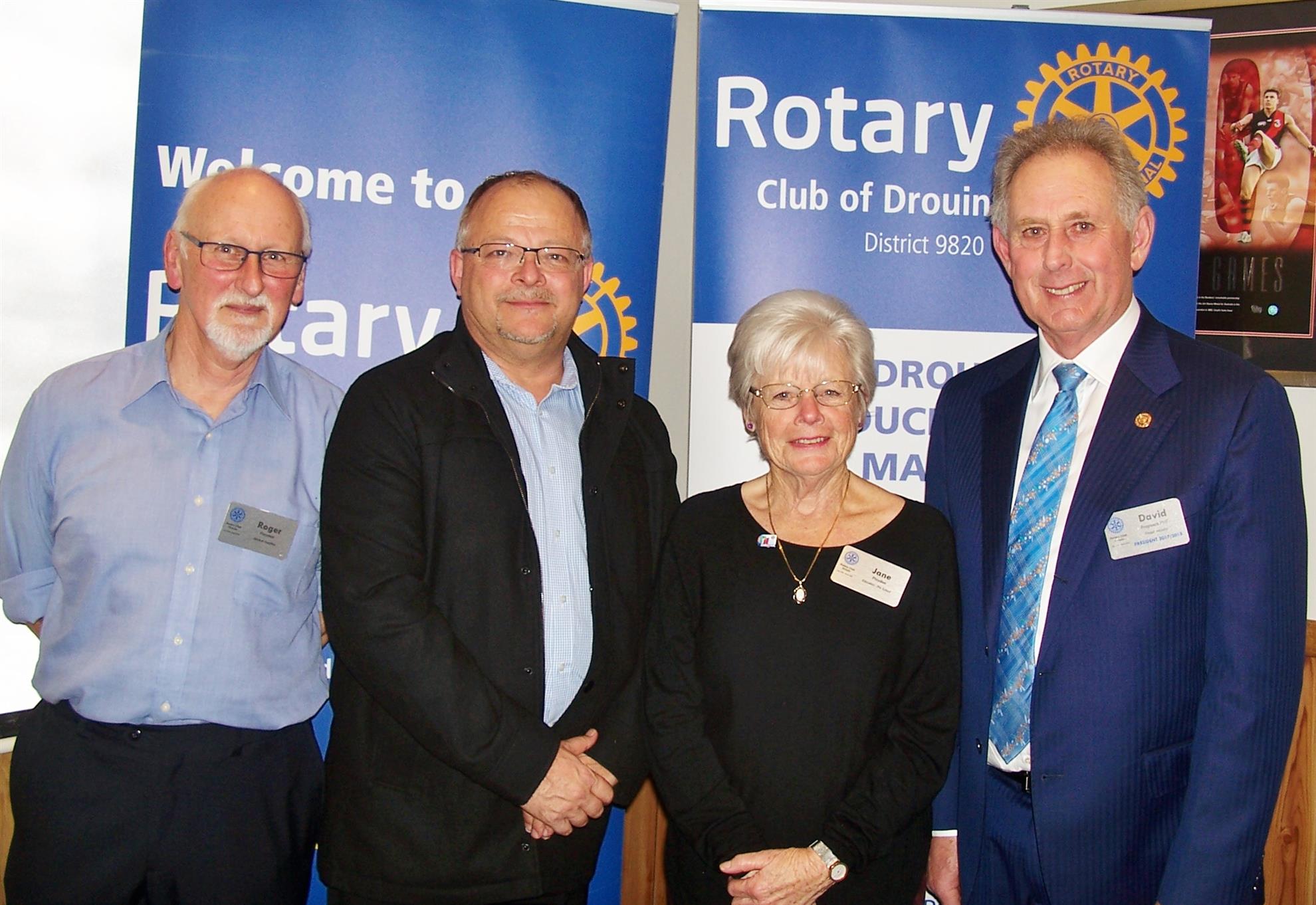
Protecting Your Retail Assets
Chairman for the evening, Rotarian Jane introduced the guest speaker for the evening, Nick Trudgett (her son-in-law). Nick has worked in sales and marketing for more than 30 years and for the past 3 years has been with security organisation Checkpoint, a Canadian company that deals with providing equipment, training and audits of security in retail outlets to prevent retail theft.
He said that basically theft comes down to 3 main types:
1. The typical shoplifting that we are all aware of....people taking things;
2. Employee theft; and
3. Vendor theft - that is carriers or suppliers under supplying on ordered items, often referred to as shrinkage.
He said that basically theft comes down to 3 main types:
1. The typical shoplifting that we are all aware of....people taking things;
2. Employee theft; and
3. Vendor theft - that is carriers or suppliers under supplying on ordered items, often referred to as shrinkage.

Rotarian Roger Playdon, Nick Trudgett, Chairman Jane and President David
Nick told the audience that the most common forms of security that we probably observe are the sensor gates and hard and soft tags that are on items such as clothing that we purchase.
The system used is one that was actually devised in World War 2 by the RAF for the identification of aircraft as they flew over England. This technology is called Radio Frequency Identification Device or RFID.
RFID is effective in sounding an alarm when the item has not been deactivated at the point of purchase.
He did say that these devices were about increasing the risk factor of being caught for the opportunistic shoplifter, who will make an assessment in the moment of the probability of being caught. It therefore it acts as a deterrent as much as a mechanism for catching thieves.
Nick quoted figures illustrating the level of theft and the sources, it is estimated that 1.02% of all sales is lost through dishonest practices; this amounts to $2.7 billion, which of course we all end up paying for, to the tune of approximately $424 each per annum. It is recognised that 39% of all losses occur from straight out shoplifting, another 25% is lost through employee dishonesty, 13% by vendor dishonesty and the remaining 23% is lost through administrative and non-criminal matters.
The most commonly stolen items are clothing and apparel, home improvement items such as tools etc. food and beverages, health and beauty products and electronic items.
It is estimated that around 2% of the population are active shoplifters.
Nick then showed a series of in-store videos of actual shoplifting and members were astonished at not just the brazen nature of the crime, but also the sheer volume or size of items that were being stolen.
The most commonly stolen items are clothing and apparel, home improvement items such as tools etc. food and beverages, health and beauty products and electronic items.
It is estimated that around 2% of the population are active shoplifters.
Nick then showed a series of in-store videos of actual shoplifting and members were astonished at not just the brazen nature of the crime, but also the sheer volume or size of items that were being stolen.
In thanking Nick for his informative presentation Chairman Jane noted that these crimes impacted on us all in higher prices and that the work of Checkpoint and its employees was in fact important to us all as consumers.
Victoria was the only state or territory in which the number of offenders decreased between 2014–15 and 2015–16, with a decrease of 3,163 offenders (or 4%). Over the same period the number of offenders increased in:
New South Wales (by 3,905 offenders or 3%)
South Australia (by 2,254 offenders or 5%)
Western Australia (by 1,322 or 3%)
Northern Territory (by 279 offenders or 2%)
Queensland (by 245 offenders or 0.2%)
Australian Capital Territory (by 125 offenders or 5%)
Tasmania (by 49 offenders or 0.5%) Source: Australian Bureau of statistics
New South Wales (by 3,905 offenders or 3%)
South Australia (by 2,254 offenders or 5%)
Western Australia (by 1,322 or 3%)
Northern Territory (by 279 offenders or 2%)
Queensland (by 245 offenders or 0.2%)
Australian Capital Territory (by 125 offenders or 5%)
Tasmania (by 49 offenders or 0.5%) Source: Australian Bureau of statistics